NORTH WALES COAST RAILWAY:NOTICE BOARD
Rheilffordd arfordir gogledd Cymru: Hysbysfwrdd
14 March 2016
 Last issue
Last issue Archive
Archive Tweet
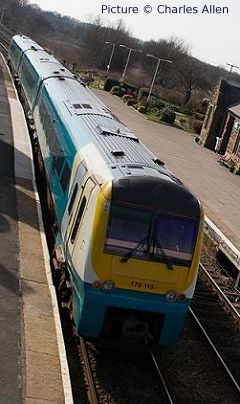
Tweets by @NWrail1
Contributions and comments are encouraged: see the Contributions Page
This list may be out of date if you are reading an archived issue. For full information visit our Calendar page.
March 2016
Friday 18 March Great Western Society NW Branch Railway Images, Thirty Miles around Warrington, Barrie Rushton. Note change of date.
Monday 21 March RCTS: Railway Correspondence and Travel Society, Merseyside, Chester and North Wales Branch. "20 Years Of The Privatised Railway - What Does The Future Hold?" by Bob Casselden. Bob, a retired former B.R. manager looks at the changes to Britain's privatised railway over the last twenty years and reflects on what the future might bring.
April 2016
Friday 1 April Clwyd Railway Circle Denbigh Film Club. Railway Enthusiasts Film Night. A night of nostalgia and fun with a selection of films old and new to end our season in great style.
Tuesday 5 April North Wales Railway Circle 'All Steamed Up' Mr Barry Wynne presents a selection of his work from his vast catalogue of photographs.
Friday 8 April Altrincham Electric Railway Preservation Society "Steam in the North West of England and Scotland in 1965" a digital presentation by Noel Coates.
Saturday 9 April Railway and Canal Historical Society The Presidential Address: The LMS
School of Transport, Derby by Graham Wild. The speaker will tell the fascinating story of the school. The talk starts with the reason for the building and its location, moving on through a description of the building to the successful fight to save it and subsequent developments with what is now a
listed building.
Monday 11 April 2016 Wrexham Railway Society 'Days Gone' A Nostalgic Look Back at the 1960-90's by Larry Davies, looking at the enormous changes which have taken place on the railways in North Wales during the last four decades of the last century illustrated, mostly by Larry's own work.
Thursday 14 April Llandudno and Conwy Valley Railway Society 1960/70s North Wales Railway Recollection Barry Wynne/Steve Morris
Monday 18 April RCTS: Railway Correspondence and Travel Society, Merseyside, Chester and North Wales Branch. One Mans Rubbish is Another's Treasure by Russell Hatt. Russell presents a selection of historic railway photographs that whilst too poor for publication are of interest to the railway historian.
Friday 29 April Great Western Society NW Branch A tribute to Tom Lewis, Railway cameraman 1947-1970, Paul Shackcloth.
May 2016
Tuesday 3 May North Wales Railway Circle AGM and Photographic Competition.
Thursday 12 May Llandudno and Conwy Valley Railway Society Ray Bailey: Steam into Holywell
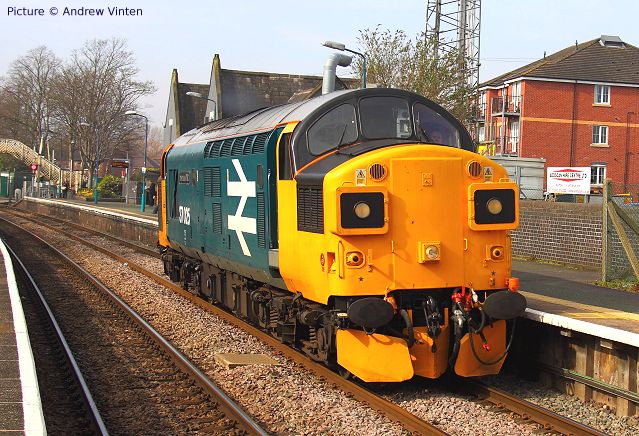
Preserved 37 025 Inverness TMD, now registered for main line operation, passes Nantwich on the way from Barry to Crewe, 11 March. Picture by Andrew Vinten.
Picture news
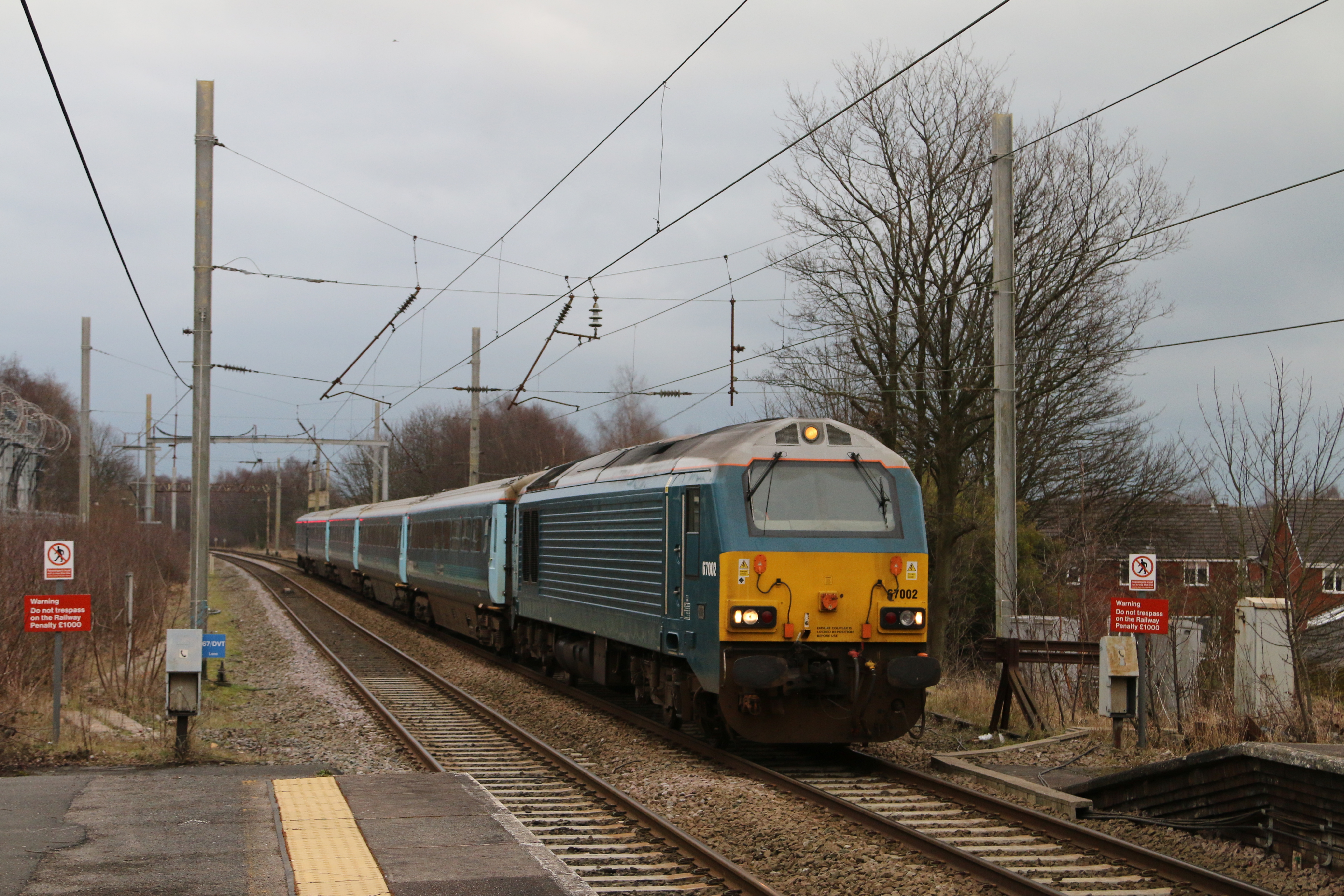
67 002 has started work on the Arriva 'Manchester diagram' for the first (?) time. Mark Youdan photographed it on 10 March at Newton-le-Willows working the 16:50 Manchester Piccadilly to Llandudno.
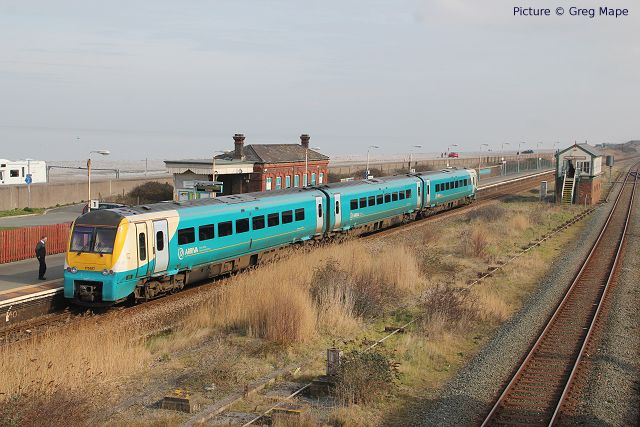
Sunday morning at Abergele, 13 March. 175 107 calls with train 1V90, 10:20 Holyhead - Cardiff (Greg Mape). We recently stumbled across an interesting set of old pictures of the station on the RMWeb forum website.
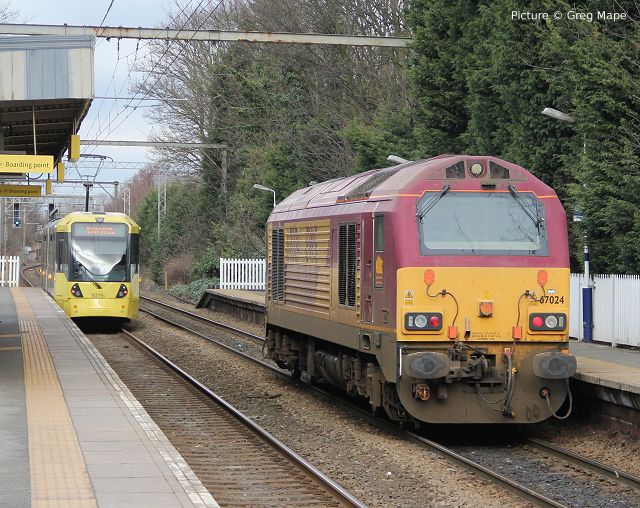
Navigation Road on 10 March. 67 024 on route learning duties from Wigan to Wakefield for the forthcoming domestic waste traffic to Wilton, chasing Deansgate-bound tram 3019 just pulling out of the station (Greg Mape). This section of Metrolink remains under the control of Network Rail's Deansgate Junction signallers; trams numbered higher than 3060 are not fitted with the older signalling system used on this section and cannot work Altrincham services; current orders take the fleet up to 120, of which 112 have so far been delivered.
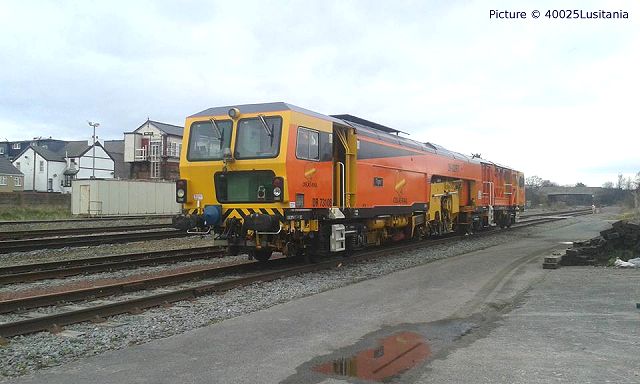
Colas Rail tamper DR 73108 in Rhyl Engineers' sidings on 3 March.Tamping work was being carried out near Prestatyn. (picture by 40025Lusitania).
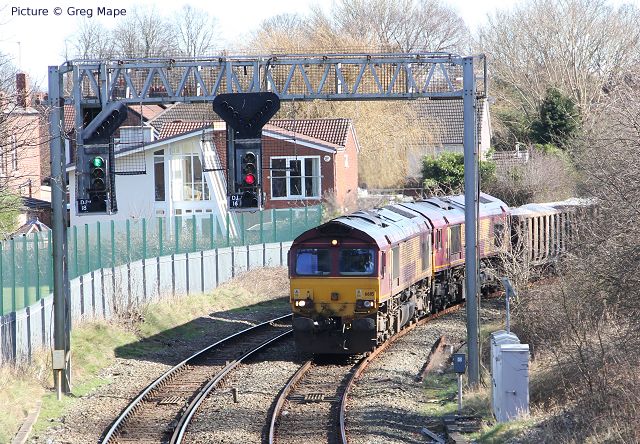
A pair of 66s negotiate the Skelton Junction - Deansgate Junction curve with a stone train on 7 March (Greg Mape). From 1 March, DB Schenker UK, operator of these locos, is now to be known as DB Cargo UK - these locos have not yet caught up with the previous change from EWS.
Letter from West Coast Railways
It's curious how West Coast Railway Company publicity continues to appear as though all is normal, even though the company is currently prohibited from running any trains. Here's a recent missive sent to passengers:Re: Hooton to Portsmouth 16 March 2016. Due to insufficient numbers of passengers interested in this trip we have had no choice but to cancel it. We believe this is likely due to the continuing inclement UK weather. We are looking to reschedule the trip for later in the year, but as yet no dates have been made available. A full refund of monies paid on each booking will be made. These refunds will be completed by Monday 14 March 2016.Could it be that inclement weather was not the only reason for the lack of interest?
We are compiling a waiting list for passengers who would like to travel on this trip later in the year. Please contact us on the above if you would like to register an interest in this.
Class 37 thoughts - by Charlie Hulme
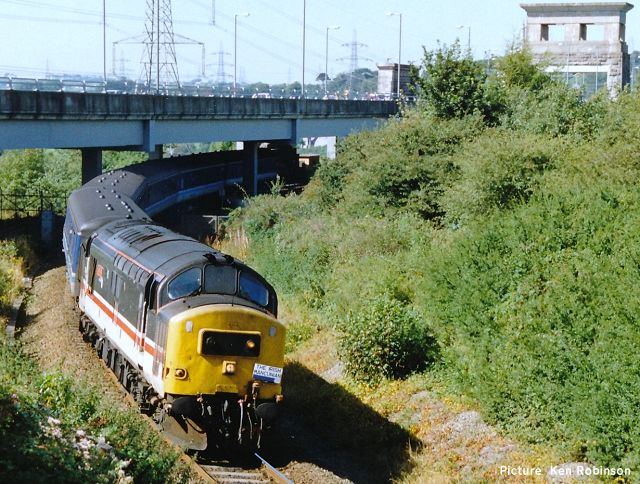 I
IInspired by our recent mention of the 'Irish Mancunian' service, Ken Robinson sends this marvellous picture of 37 407 Loch Long leaving the Britannia Bridge with train 1J44, the 13:30 Holyhead - Manchester Victoria on Saturday 21 August 1993. This was the return working of 1D37, 09:50 Manchester Victoria - Holyhead; connection was made at Holyhead with ferries to and from Ireland, so Regional Railways coined the title 'Irish Mancunian' for that pair of trains - not a historic name, but a brand-new one for a train, although a common local term for the many Irish migrant families living in the Manchester area.
The headboard looks like the work of local North Wales staff: can anyone tell us its history?
The service was later altered to start from Stockport and run via Manchester Piccadilly, losing its title when the Class 175s took over. For a while under Arriva's obsession with a 'clock-face' pattern timetable there was no direct Manchester - Holyhead train at all, but today it is back - sadly minus name - loco-hauled at 09:50 from Manchester, albeit from Piccadilly rather than Victoria ... although there are suggestions that North Wales trains might return to 'Vic' in the future.
The carriages are all in Regional Railways livery, although the loco still carries the name from its days in the Highlands, and the so-called 'Mainline' livery dating which was designed for (I think) locos which were mainly for freight but could be used on passenger duty. It differed from Inter-City livery by not having a white roof. At the time these Crewe-based 37/4s were used on North Wales trains ans also the 'Club Trains' which ran from Southport and Blackpool in the morning peak and back in the evening. 37 407 never received Regional Railways livery, but was repainted in 'Railfreight Triple Grey' later embellished with Transrail's 'Big T' logo during the pre-privatisation phase. In February 1995 it was re-named 'Blackpool Tower'. Sources differ on where the unveiling took place; was it Blackpool or London Euston, or both?
In 1997 it was transferred away to other parts of the country. Its final duties were on the Cardiff - Rhymney line passenger services until February 2002, after which it languished in various EWS depots, still in grey livery, until sold (with 37 424) in 2007 to a preservationist and moved to the Churnet Valley line where it continued to languish - see this picture from 2012. Salvation came in the shape of DRS who, having won passenger contracts in Cumbria and East Anglia, decided to increase their Class 37/4 fleet, as the sub-type is fitted with electric supply for train heating and lighting. Along with 37 424, it was moved by road to the RVEL works in Derby for a full overhaul which is in progress at the time of writing. 37 403 and 413, which had been preserved at the Bo'ness and Kinneil line, have also been bought by DRS.
Below is a summary of the situation of the surviving Class 37/4s:
37 401 - Mary Queen of Scots DRS fleet
37 402 - Stephen Middlemore DRS fleet
37 403 - On hire to DRS, under overhaul
37 405 - in service with DRS (currently out of traffic)
37 407 - DRS under overhaul
37 409 - Lord Hinton - DRS fleet
37 413 - DRS stored at RVEL
37 418 - at the East Lancashire Railway, only 37/4 now in preservation
37 419 - DRS fleet
37 421 - Colas Rail fleet
37 422 - DRS fleet
37 423 - Spirit of the Lakes - DRS fleet
37 424 - DRS under overhaul
37 425 - Sir Robert McAlpine / Concrete Bob DRS fleet
The engineers who created them by rebuilding Class 37s back in 1985-86 must be pleased to see 12 of the original 31 examples still needed by main line operators in 2016. All the class were given 'BR large logo blue' livery on rebuilding, and in an interesting development, DRS appear to have decided to apply that colour scheme to all of them. 37 401 was done while on loan to the Bo'ness line, 37 402 has recently entered traffic in this style, and we understand 37 403 has also been given the heritage look.
As many people have pointed out, however, the large numbers are being applied to the loco sides in a typeface (Arial?) different from the original 'Rail Alphabet' as custom-designed for British Rail back in the 1960s. It seems that every time a rail company decides to go for a 'heritage' rail blue look, this detail is missed. The most obvious difference is that the '7' should have a straight down-stroke. Virgin trains got it 'wrong' with 47 847, and Arriva Trains Wales with 37 425, although 47 847 at least was corrected. (Late news - 37 402's numbers have now been corrected at DRS Kingmoor depot. Thanks to Richard W. Jones for this info.)
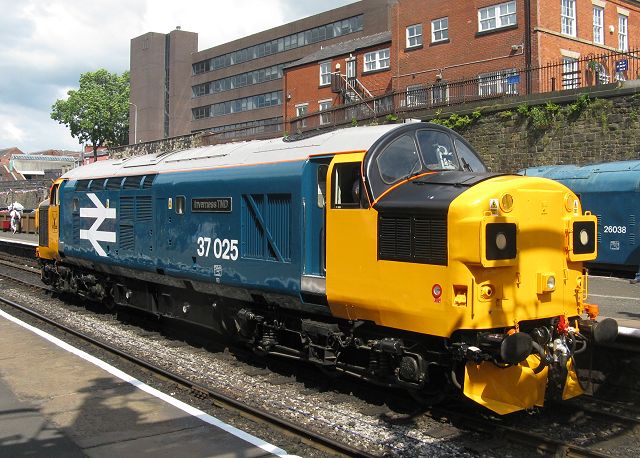
Above, preserved 37 025 Inverness TMD shows off the accurate version, and the correct space between the 37 and 025, at Bury last summer. The black nameplate looks odd, as blue locos usually had red backgrounds, but it is authentic, as a picture on Flickr shows ... and also proves that British Rail used Helvetica numbers on this loco so the preservationists are 'wrong'!

Arriva's first effort using Helvetica - seen at Blaenau Ffestiniog in 2005.
Looking back at Chester West - with Anthony Robinson
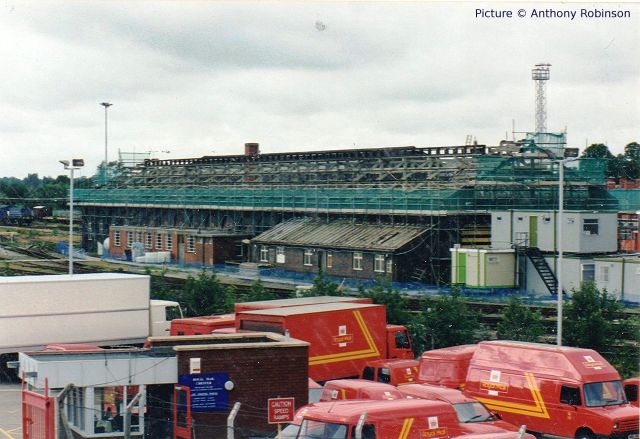
Chester West in summer 1996 (above). The old Great Western Railway loco shed is being treated to a re-roofing. For a short while this resulted in a gaudy blue corrugated affair ill-suited to its G.W. architecture. The intention seems to have been to fit it out it as a depot for the new Class 175 units, but the project was abandoned and soon afterwards the building was demolished completely and replaced by the edifice pictures below.
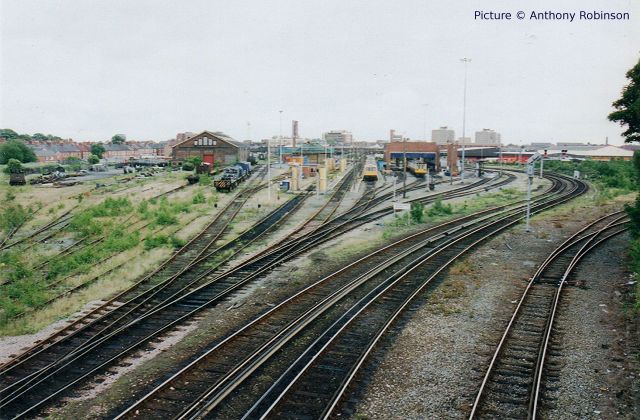
A panoramic view taken from the old Cheshire Lines bridge showing the ex-G.W. shed and yard now weed-strewn. Alongside is the 1957-built diesel multiple unit shed which replaced a former LNWR building. When the larger North Western shed (Chester Midland) opened, around 1890, the G.W took over the whole of this site until conversion to dieselisation closed the Western Region steam shed in 1960.
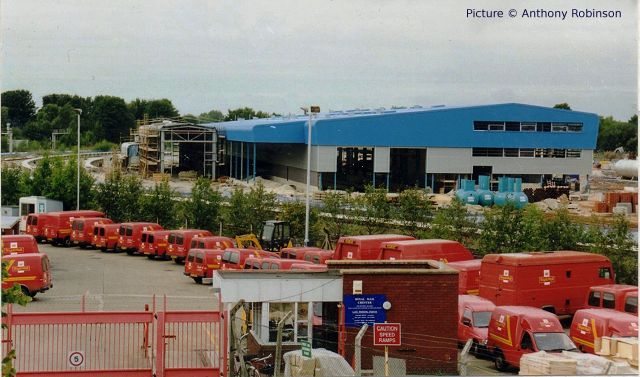
Summer 1999, and construction of the new Alstom servicing facility well advanced. This depot now handles all servicing of the Class 175 'Coradia' units that have all but taken over Arriva's North Wales passenger workings.
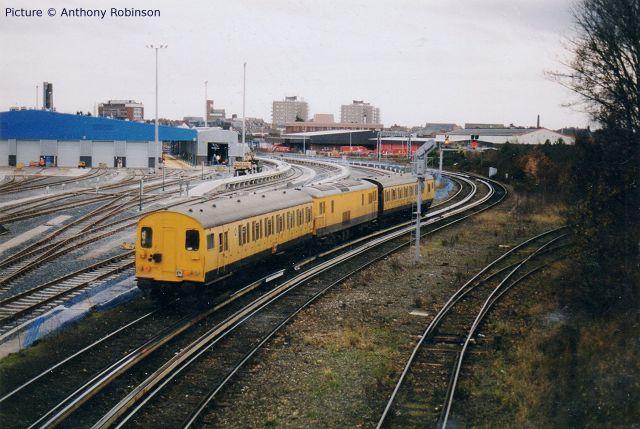
November 1999, and another view from the Cheshire Lines bridge, now carrying a cycleway, shows the yard end of the depot with a Merseyrail Engineering Dept. 'de-icier' train heading into Chester station. The purpose of this unit is to deposit anti-freeze on the conductor rail prior to an expected sharp frost.
Editor's note: The train is formed two former North London Line Class 501 cars sandwiching a former Southern Region Electro-diesel Class 73 loco, of which several were transferred to Merseyrail. The loco shown is one of the two - 73 001 and 73 006 - which gained the yellow Merseyrail colours. 73 001 is now preserved on the East Lancashire Railway; it will be performing at the ELR 'Small Engines weekend' on 16-17 April. 73 006, which was also sold for preservation, was purchased by GB Railfreight in 2014 and received a drastic rebuild into 73 967, for use on the Highland portions of the Caledonian Sleeper service.
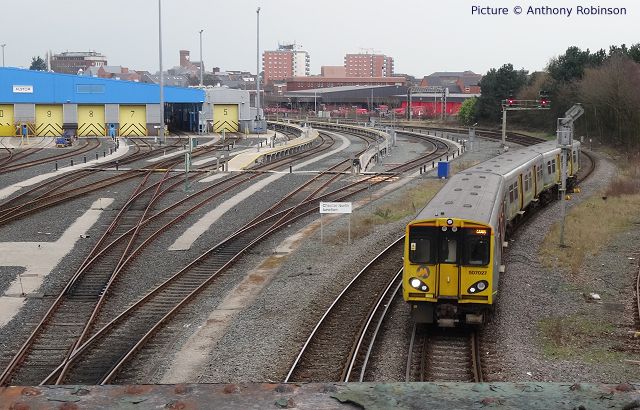
The present-day scene on 27 February 2016, with 507 027 departing for Liverpool. No Class 175s in view: the fleet is kept very busy during the day.
Arriva Trains Wales dispute settled
The Daily Post reports that drivers in the ASLEF union has now voted to accept a new pay and conditions offer from Arriva. Talks have broken down on a number of occasions and led to a 24 strike action on January 4 that wiped out train services across the region. An ASLEF spokesman said: 'ASLEF drivers on Arriva Trains Wales have voted to accept a revised package offered by the company. The vote was Yes 59% and No 41% on an 82% turnout.'
Stock surprises at Stafford - report by David Parry
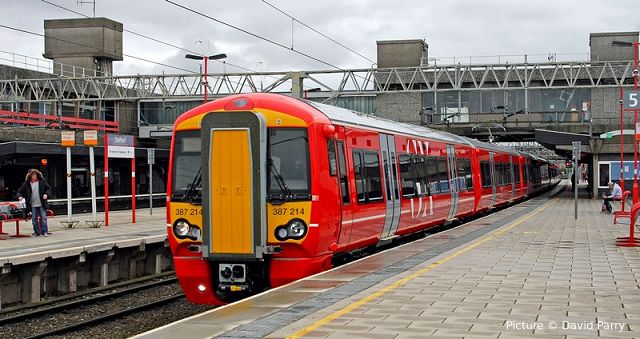
On Thursday 3 March, I spent a few hours at Stafford with the intention of photographing freight traffic, which turned out to be rather more scarce than I had expected. However, the trip had its compensations, amongst them some interesting empty stock movements. Firstly, I was surprised at about 1240 when I saw, in place of an expected Royal Mail train, a different type of emu approaching, red, but with gangway connections. This turned out to be a pair of new Gatwick Express units presumably on a test run, 387 214 leading.
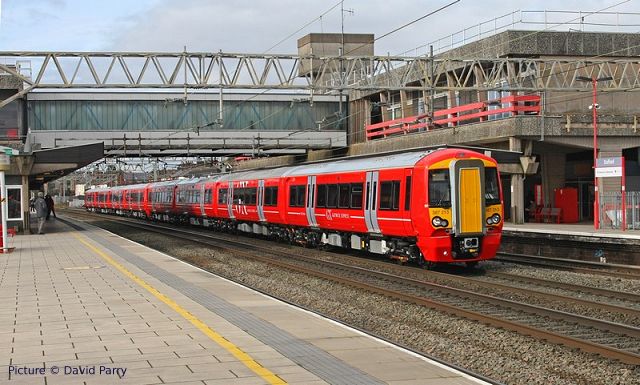
They returned at about 14:30, this time on the up fast line, 387 213 in the lead, having reversed at Crewe.
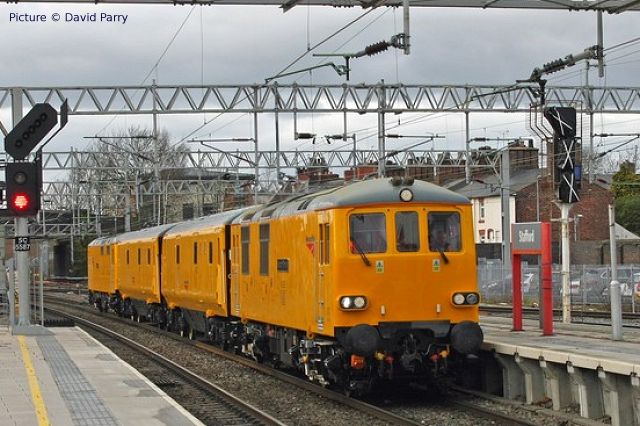
Just before I was about to leave, I was tipped off that the two Network Rail class 73 conversions were approaching from the Crewe direction, passing with 73 951 leading at about 14:55.
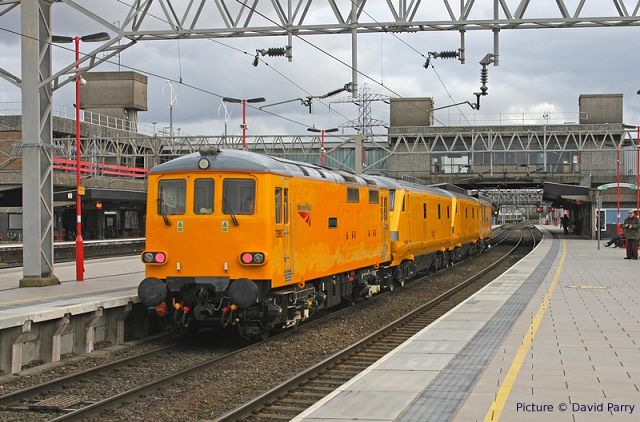
The reverse shot of 73 952 makes it clearer that the two coaches between the electro-diesels are Driving Van Trailers. I understand the role of these locos and vehicles will be network monitoring. [The jpeg picture compression algorithm is not kind to colours of this nature.]
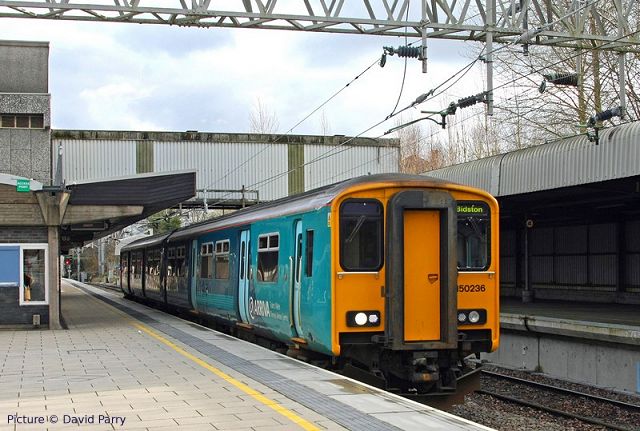
One movement that I certainly had not expected to see was Arriva unit 150 236 carrying destination indications for Bidston at one end and Wrexham General at the other. I assume the unit was returning from Cardiff Canton to Wrexham following maintenance, but the route is intriguing...
Addendum - Charles Allen writes: 'ATW have been carrying out some train crew training runs with a 150 running empty stock from Chester to Birmingham, covering the lines through Bescot, Soho and Aston in order to train and maintain route knowledge for Drivers and Guards for diversions from the usual route through Smethwick.'
Portrait of Helsby
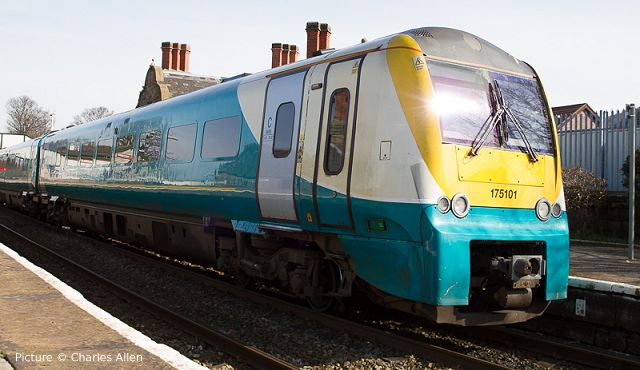
Helsby station has won a number of 'Best Kept Station' awards. Charles Allen offers a selection of portraits of the place. Above, 175 101 calls on a Manchester - North Wales service.
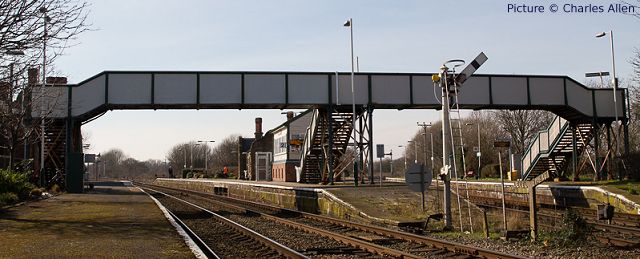
Panorama showing the four platforms, footbridge, and Helsby Junction signalbox.
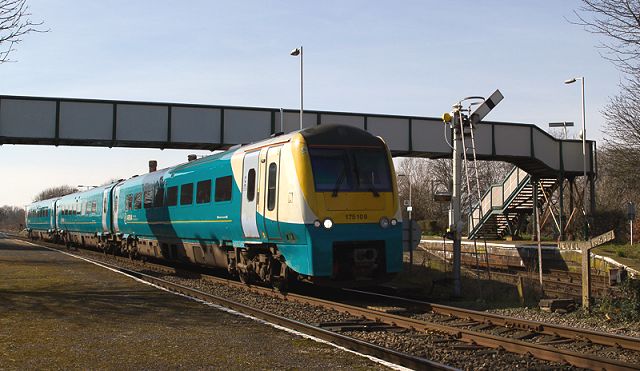
175 108 heading for Manchester.
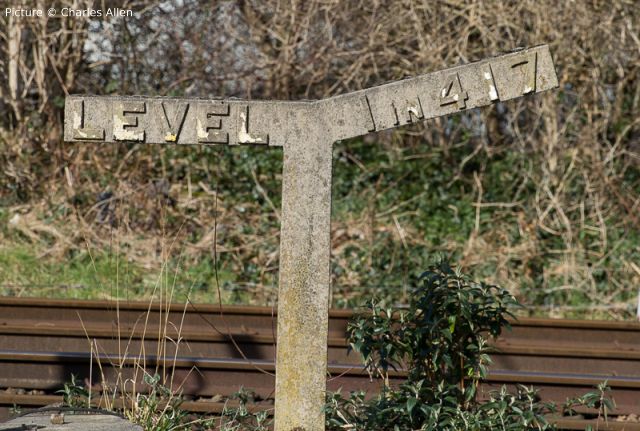
Accurately-measured gradient on a concrete-cast sign.
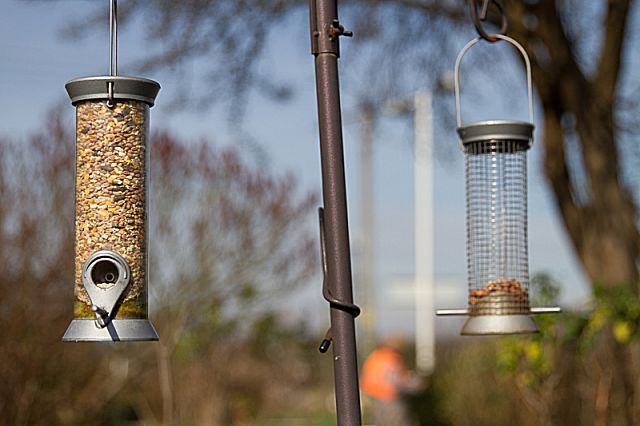
Catering for avian visitors.
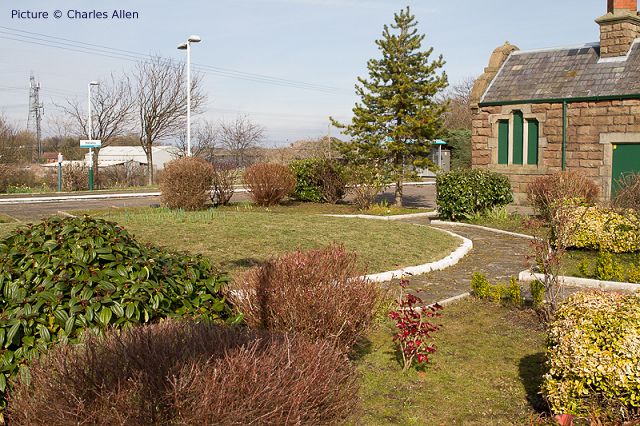
The work of local volunteers shows up in the station gardens. Helsby is fortunate in having (for now) a working signalbox, a human presence which deters any anti-social behaviour.
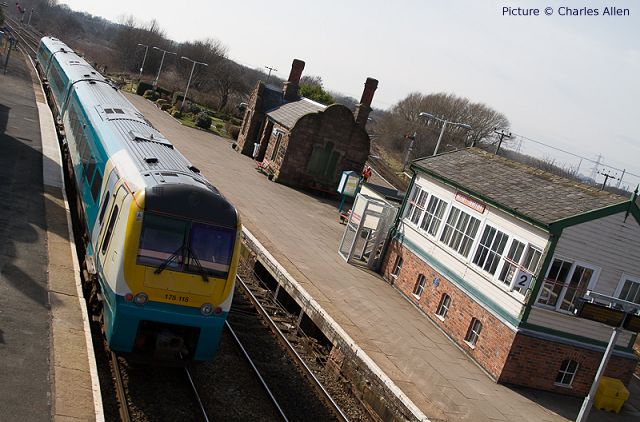
The station buildings in Jacobean style using local red sandstone are an adornment to the station; now the LNWR standard signalbox with its 21st-century security precaution.
Goodbye to the Bangor Railway Institute
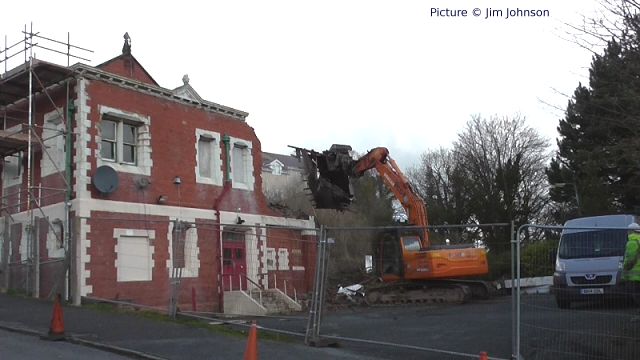
Despite protests and petitions, the historic Bangor Railway Institute had now been demolished. Jim Johnson photographed the work under way on 3 March.
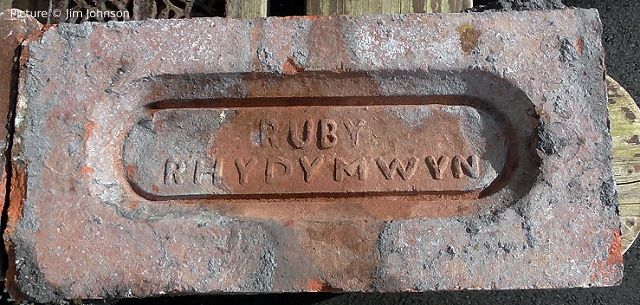
Some interesting bricks could be found in the rubble. Above, one bearing the name of Rhydymwyn, a village mentioned in out last issue. Did their products to travel to Bangor by rail?
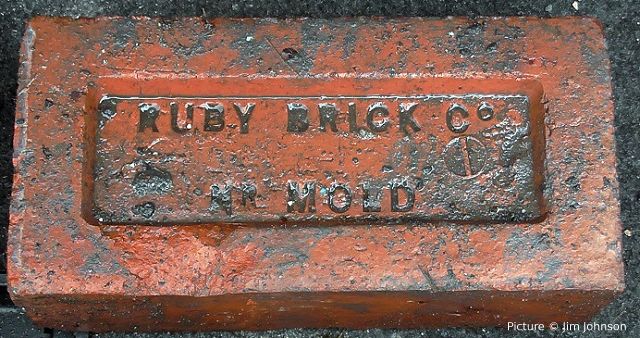
Remains of the abandoned works of the Ruby Brick Co. could still be seen in recent times.
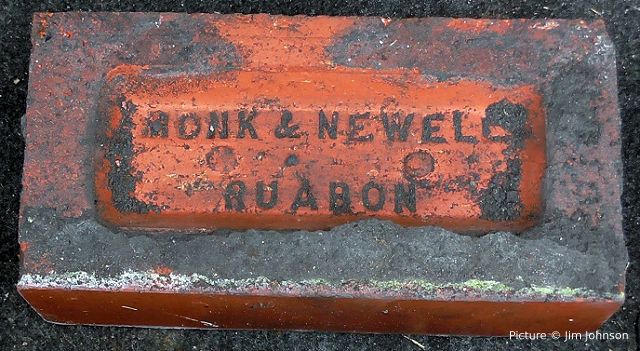
Brick-making in Ruabon, especially of the hard terra-cotta type was once a major industry. The Monk and Newell works closed in the 1920s and the site was later used for housing ('Newell Drive') and the adjacent flooded clay pit (Monk's Pool) is now used by a local angling club.
If you are interested in named bricks, out contributor Dave Sallery's website "Old Bricks - history at your feet" is the place to start.
North Wales Coast home page | Archive | Previous Notice Board